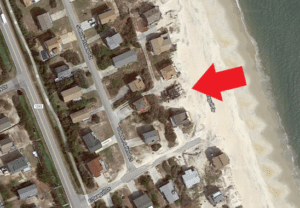Governments violate our property rights a lot, but the plaintiffs in these Supreme Court cases fought back

I spoke at the 2019 Foundation of Economic Education conference in Atlanta. The following is a brief overview of my presentation on the importance of our property rights and how PLF has fought for property rights over the decades.
~~~
Many countries around the world have governing documents worth less than the paper they’re written on. A fundamental reason our Constitution is different is that it specifically limits government’s ability to infringe on our rights, and people can defend those rights in court.
Our property rights are, unfortunately, one of the most common rights that governments try to violate. But for over 45 years, Pacific Legal Foundation has defended people’s property rights from myriad government attempts to violate them.
In 1982, Marilyn and Patrick Nollan applied for a permit to replace a one-story ramshackle bungalow on the California coast with a modest two-story home. The California Coastal Commission (CCC) agreed to grant the Nollans a permit, but the CCC demanded the Nollans give away one-third of their property to the government in exchange for it. The commission said the taller home would make it harder for motorists to see the ocean, creating a “psychological barrier” to the sea. We represented the Nollans and took their case all the way to the Supreme Court. In 1987, Justice Scalia’s majority opinion called the scheme an “out-and-out plan of extortion.”
As a result of that decision, governments cannot force people to acquiesce to ridiculous demands in exchange for simple development permits.
In 2001, the Rhode Island Supreme Court ruled that a landowner could not challenge the application of a regulation in court if the regulation went into effect before he acquired the property. PLF took over that landowner’s case and asked the U.S. Supreme Court to reverse its decision. And the Court agreed, writing: “Future generations, too, have a right to challenge unreasonable limitations on the use and value of land.”
A half-dozen years later, we were back in the U.S. Supreme Court, this time arguing that a couple who had started to build a small three-bedroom home had a right to challenge the EPA’s claim that their home site was on wetlands. The EPA then threatened to fine the couple $75,000 per day for every day they refused to remove their building site fill. By the time their case reached the Court, the fines were over $100 million. At the oral argument in the case, one Justice suggested that “most ordinary homeowners would say this kind of thing can’t happen in the United States.” The Court rebuked the EPA with a unanimous ruling that allows landowners to challenge absurd EPA orders like this.
Throughout our nation’s history, the courts often have been the last resort for people being oppressed by their government. PLF has carried on that tradition with over a dozen wins at the Supreme Court. And yet, after each one of our victories, some government agencies have tried to evade the holdings and find new ways to take people’s property without paying for it.
Fortunately, there are always people willing to push back when their constitutional rights are threatened. And PLF exists to help those people push back.





